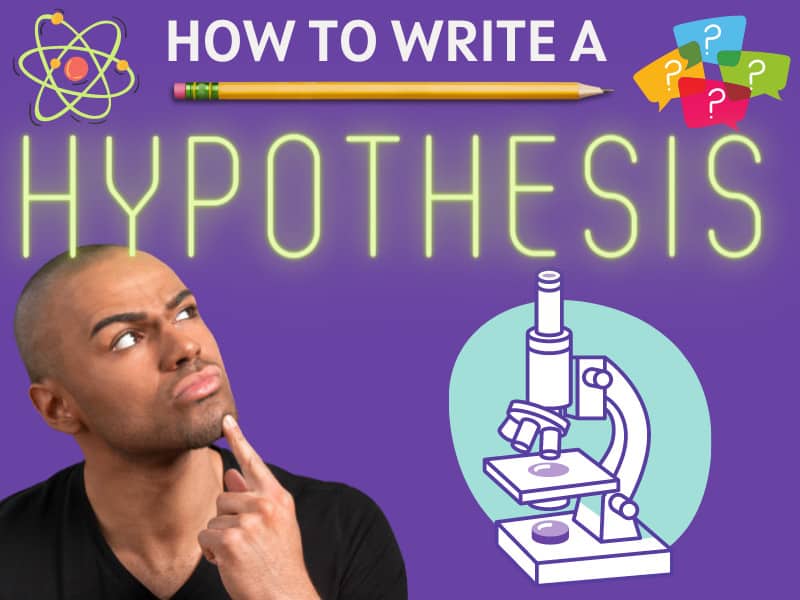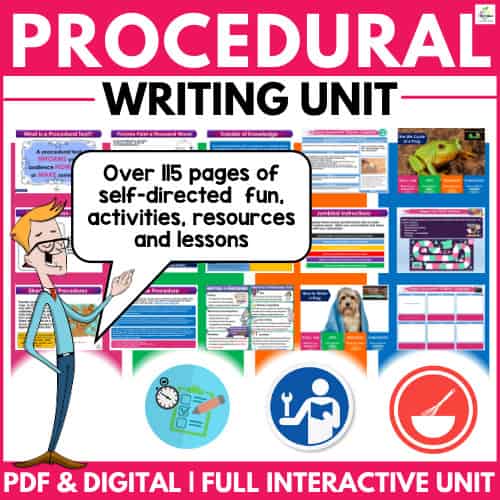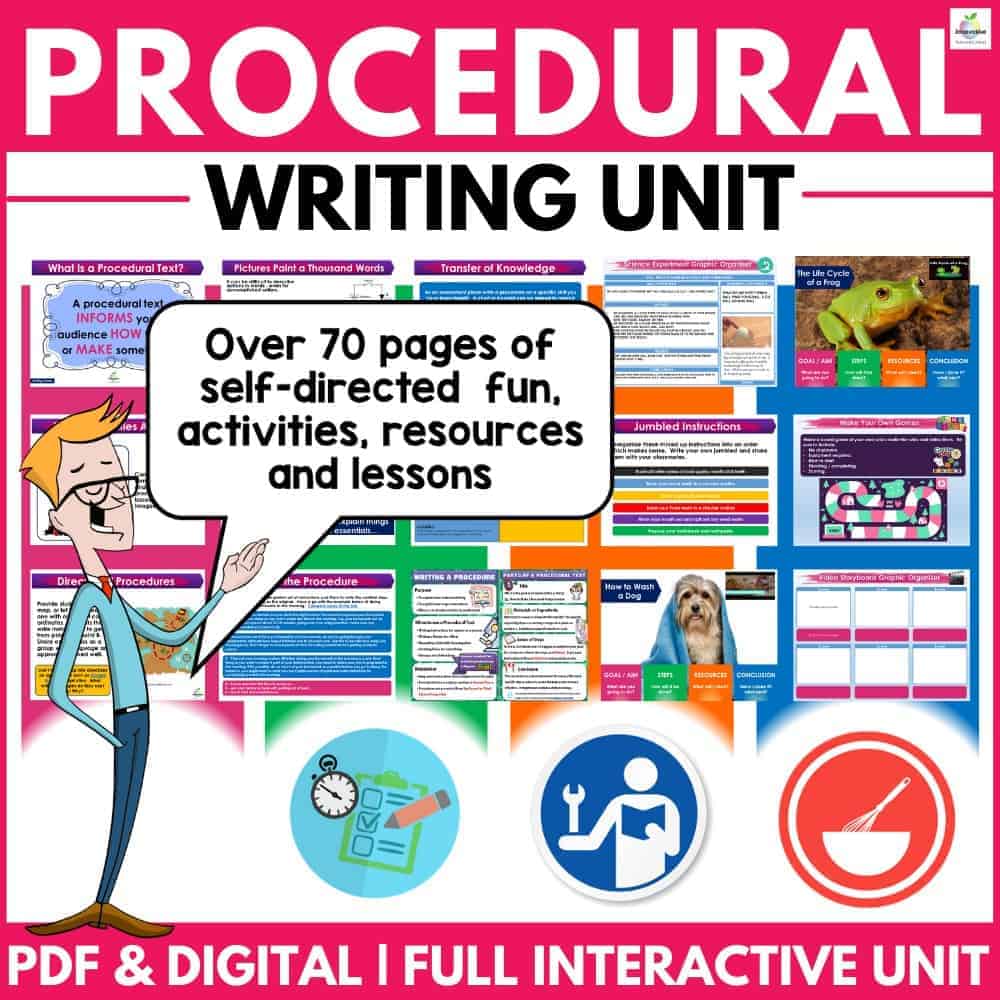
Writing a hypothesis
Frequently, when we hear the word ‘hypothesis’, we immediately think of an investigation in the form of a science experiment. This is not surprising, as science is the subject area where we are usually first introduced to the term.
However, the term hypothesis also applies to investigations and research in many diverse areas and branches of learning, leaving us wondering how to write a hypothesis in statistics and how to write a hypothesis in sociology alongside how to write a hypothesis in a lab report.
We can find hypotheses at work in areas as wide-ranging as history, psychology, technology, engineering, literature, design, and economics. With such a vast array of uses, hypothesis writing is an essential skill for our students to develop.
What Is a Hypothesis?

A hypothesis is a proposed or predicted answer to a question. The purpose of writing a hypothesis is to follow it up by testing that answer. This test can take the form of an investigation, experiment, or writing a research paper that will ideally prove or disprove the hypothesis’s prediction.
Despite this element of the unknown, a hypothesis is not the same thing as a guess. Though the hypothesis writer typically has some uncertainty, the creation of the hypothesis is generally based on some background knowledge and research of the topic. The writer believes in the likelihood of a specific outcome, but further investigation will be required to validate or falsify the claim made in their hypothesis.
In this regard, a hypothesis is more along the lines of an ‘educated guess’ that has been based on observation and/or background knowledge.
A hypothesis should:
- Make a prediction
- Provide reasons for that prediction
- Specifies a relationship between two or more variables
- Be testable
- Be falsifiable
- Be expressed simply and concisely
- Serves as the starting point for an investigation, an experiment, or another form of testing
Hypothesis Examples for Students and Teachers
If students listen to classical music while studying, they will retain more information.
Mold growth is affected by the level of moisture in the air.
Students who sleep for longer at night retain more information at school.
Employees who work more than 40 hours per week show higher instances of clinical depression.
Time spent on social media is negatively correlated to the length of the average attention span.
People who spend time exercising regularly are less likely to develop a cardiovascular illness.
If people are shorter, then they are more likely to live longer.
What are Variables in a Hypothesis?
Variables are an essential aspect of any hypothesis. But what exactly do we mean by this term?
Variables are changeable factors or characteristics that may affect the outcome of an investigation. Things like age, weight, the height of participants, length of time, the difficulty of reading material, etc., could all be considered variables.
Usually, an investigation or experiment will focus on how different variables affect each other. So, it is vital to define the variables clearly if you are to measure the effect they have on each other accurately.
There are three main types of variables to consider in a hypothesis. These are:
- Independent Variables
- Dependent Variables
The Independent Variable
The independent variable is unaffected by any of the other variables in the hypothesis. We can think of the independent variable as the assumed cause.
The Dependent Variable
The dependent variable is affected by the other variables in the hypothesis. It is what is being tested or measured. We can think of the dependent variable as the assumed effect.
For example, let’s investigate the correlation between test scores across different age groups. The age groups will be the independent variable, and the test scores will be the dependent variable.
Now that we know what variables are let’s look at how they work in the various types of hypotheses.
Types of Hypotheses
There are many different types of hypotheses, and it is helpful to know the most common of these if the student selects the most suitable tool for their specific job.
The most frequently used types of hypotheses are:
- The Simple Hypothesis
- The Complex Hypothesis
- The Empirical Hypothesis
- The Null Hypothesis
- The Directional Hypothesis
- The Non-Directional Hypothesis
The Simple Hypothesis
This straightforward hypothesis type predicts the relationship between an independent and dependent variable.
Example: Eating too much sugar causes weight gain.
The Complex Hypothesis
This type of hypothesis is based on the relationship between multiple independent and/or dependent variables.
Example: Overeating sugar causes weight gain and poor cardiovascular health.
The Empirical Hypothesis
Also called a working hypothesis, an empirical hypothesis is tested through observation and experimentation. An empirical hypothesis is produced through investigation and trial and error. As a result, the empirical hypothesis may change its independent variables in the process.
Example: Exposure to sunlight helps lettuces grow faster.
The Null Hypothesis
This hypothesis states that there is no significant or meaningful relationship between specific variables.
Example: Exposure to sunlight does not affect the rate of a plant’s growth.
The Directional Hypothesis
This type of hypothesis predicts the direction of an effect between variables, i.e., positive or negative.
Example: A high-quality education will result in a greater number of career opportunities.
The Non-Directional Hypothesis
Similar to the directional hypothesis, this type of hypothesis predicts the nature of the effect but not the direction that effect will go in.
Example: A high-quality education will affect the number of available career opportunities.
How to Write a Hypothesis: A STEP-BY-STEP GUIDE
- Ask a Question
The starting point for any hypothesis is asking a question. This is often called the research question. The research question is the student’s jumping-off point to developing their hypothesis. This question should be specific and answerable. The hypothesis will be the point where the research question is transformed into a declarative statement.
Ideally, the questions the students develop should be relational, i.e., they should look at how two or more variables relate to each other as described above. For example, what effect does sunlight have on the growth rate of lettuce?
- Research the Question
The research is an essential part of the process of developing a hypothesis. Students will need to examine the ideas and studies that are out there on the topic already. By examining the literature already out there on their topic, they can begin to refine their questions on the subject and begin to form predictions based on their studies.
Remember, a hypothesis can be defined as an ‘educated’ guess. This is the part of the process where the student educates themself on the subject before making their ‘guess.’
- Define Your Variables
By now, your students should be ready to form their preliminary hypotheses. To do this, they should first focus on defining their independent and dependent variables. Now may be an excellent opportunity to remind students that the independent variables are the only variables that they have complete control over, while dependent variables are what is tested or measured.
- Develop Your Preliminary Hypotheses
With variables defined, students can now work on a draft of their hypothesis. To do this, they can begin by examining their variables and the available data and then making a statement about the relationship between these variables. Students must brainstorm and reflect on what they expect to happen in their investigation before making a prediction upon which to base their hypothesis. It’s worth noting, too, that hypotheses are typically, though not exclusively, written in the present tense.
Students revisit the different types of hypotheses described earlier in this article. Students select three types of hypotheses and frame their preliminary hypotheses according to each criteria. Which works best? Which type is the least suitable for the student’s hypothesis?
- Finalize the Phrasing
By now, students will have made a decision on which type of hypothesis suits their needs best, and it will now be time to finalize the wording of their hypotheses. There are various ways that students can choose to frame their hypothesis, but below, we will examine the three most common ways.
The If/Then Phrasing
This is the most common type of hypothesis and perhaps the easiest to write for students. It follows a simple ‘If x, then y’ formula that makes a prediction that forms the basis of a subsequent investigation.
E.g.,
If I eat more calories, then I will gain weight.
Correlation Phrasing
Another way to phrase a hypothesis is to focus on the correlation between the variables. This typically takes the form of a statement that defines that relationship positively or negatively.
E.g.,
The more calories that are eaten beyond the daily recommended requirements, the greater the weight gain will be.
Comparison Phrasing
This form of phrasing is applicable when comparing two groups and focuses on the differences that the investigation is expected to reveal between those two groups.
E.g.,
Those who eat more calories will gain more weight than those who eat fewer calories.
Questions to ask during this process include:
- What tense is the hypothesis written in?
- Does the hypothesis contain both independent and dependent variables?
- Is the hypothesis framed using the if/then, correlation, or comparison framework (or other similar suitable structure)?
- Is the hypothesis worded clearly and concisely?
- Does the hypothesis make a prediction?
- Is the prediction specific?
- Is the hypothesis testable?
- Gather Data to Support/Disprove Your Hypothesis
If the purpose of a hypothesis is to provide a reason to pursue an investigation, then the student will need to gather related information together to fuel that investigation.
While, by definition, a hypothesis leans towards a specific outcome, the student shouldn’t worry if their investigations or experiments ultimately disprove their hypothesis. The hypothesis is the starting point; the destination is not preordained. This is the very essence of the scientific method. Students should trust the results of their investigation to speak for themselves. Either way, the outcome is valuable information.
TOP 10 TIPS FOR WRITING A STRONG HYPOTHESIS
- Begin by asking a clear and compelling question. Your hypothesis is a response to the inquiry you are eager to explore.
- Keep it simple and straightforward. Avoid using complex phrases or making multiple predictions in one hypothesis.
- Use the right format. A strong hypothesis is often written in the form of an “if-then” statement.
- Ensure that your hypothesis is testable. Your hypothesis should be something that can be verified through experimentation or observation.
- Stay objective. Your hypothesis should be based on facts and evidence, not personal opinions or prejudices.
- Examine different possibilities. Don’t limit yourself to just one hypothesis. Consider alternative explanations for your observations.
- Stay open to the possibility of being wrong. Your hypothesis is just a prediction, and it may not always be correct.
- Search for evidence to support your hypothesis. Investigate existing literature and gather data that supports your hypothesis.
- Make sure that your hypothesis is pertinent. Your hypothesis should be relevant to the question you are trying to investigate.
- Revise your hypothesis as necessary. If new evidence arises that contradicts your hypothesis, you may need to adjust it accordingly.
HYPOTHESIS TEACHING STRATEGIES AND ACTIVITIES
When teaching young scientists and writers, it’s essential to remember that the process of formulating a hypothesis is not always straightforward. It’s easy to make mistakes along the way, but with a bit of guidance, you can ensure your students avoid some of the most common pitfalls like these.
- Don’t let your students be too vague. Remind them that when formulating a hypothesis, it’s essential to be specific and avoid using overly general language. Make sure their hypothesis is clear and easy to understand.
- Being swayed by personal biases will impact their hypothesis negatively. It’s important to stay objective when formulating a hypothesis, so avoid letting personal biases or opinions get in the way.
- Not starting with a clear question is the number one stumbling block for students, so before forming a hypothesis, you need to reinforce the need for a clear understanding of the question they’re trying to answer. Start with a question that is specific and relevant.
Hypothesis Warmup Activity: First, organize students into small working groups of four or five. Then, set each group to collect a list of hypotheses. They can find these by searching on the Internet or finding examples in textbooks. When students have gathered together a suitable list of hypotheses, have them identify the independent and dependent variables in each case. They can underline each of these in different colors.
It may be helpful for students to examine each hypothesis to identify the ‘cause’ elements and the ‘effect’ elements. When students have finished, they can present their findings to the class.
Task 1: Set your students the task of coming up with an investigation-worthy question on a topic that interests them. This activity works particularly well for groups.
Task 2: Students search for existing information and theories on their topic on the Internet or in the library. They should take notes where necessary and begin to form an assumption or prediction based on their reading and research that they can investigate further.
Task 3: When working with a talking partner, can students identify which of their partner’s independent and dependent variables? If not, then one partner will need to revisit the definitions for the two types of variables as outlined earlier.
Task 4: Organize students into smaller groups and task them with presenting their hypotheses to each other. Students can then provide feedback before the final wording of each hypothesis is finalized.
Perhaps due to their short length, learning how to create a well-written hypothesis is not typically afforded much time in the curriculum.
However, though they are brief in length, they are complex enough to warrant focused learning and practice in class, particularly given their importance across many curriculum areas.
Learning how to write a hypothesis works well as a standalone writing skill. It can also form part of a more comprehensive academic or scientific writing study that focuses on how to write a research question, develop a theory, etc.
As with any text type, practice improves performance. By following the processes outlined above, students will be well on their way to writing their own hypotheses competently in no time.



